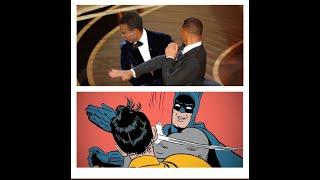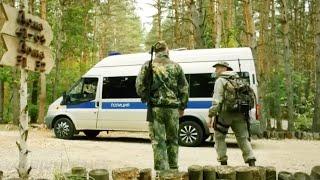
From D-day to Arnhem, Spectacular use of Gliders during Operation Market Garden in 1944 in color!
Комментарии:

On D-day, the 6th of June 1944 the allied forces commenced their invasion from the beaches of Normandy, under the code name Operation Overlord, in order to free Europe from the German occupation. The invasion was launched with large-scale mass amphibuous beach landings and airborne landings.
The U.S. 82nd and 101st Airborne Divisions and the British 6th Airborne Division were tasked with the airborn landings. These landings consisted of parachute droppings as well as the use of glider planes for large scale troup transports.
Heavy fighting took place on the Normandy beaches. Over 4400 troups were killed on D-day itself, followed by 73000 casualties and 153000 wounded in the follow weeks of trying to capture Normandy. It took until 25 August to liberate France with the capture and surrender of Paris.
In this film we will focus on the period after D-day, especially how the allies went about advancing towards German with as main objective to get rid of the Nazi leadership by capturing Berlin. In particular the film shows how massive numbers of troups were transported to compat areas by means of glider planes.
One of the main obstacles on route to Berlin was the Siegfried line, a difficult to capture German defence line that roughly followed the Eastern borders of Northern France, Luxemburg and the Netherlands.
British ground troups commander Marshall Bernard Montgomery devised a cunning strategic plan to circumvent the Siegfried line by preparing an more westerly advance via the south of The Netherlands via the route Eindhoven - Son - Veghel - Nijmegen and Arnhem on to the German Ruhr area.
His plan had two components, operation "market" using airborn landings and operation "garden" consisting of the use of ground troups.
Operation Market Garden (OMG) started on September 17, 1944 during daytime, mainly because from September 16 to 17 there was no moonlight. The aim was to advance from Belgium to the IJsselmeer with a combination of an airborne operation and a ground offensive, deploying 150,000 men. This maneuver was intended to isolate the German troops in the western Netherlands and to open the way to the German industrial heart, the Ruhr area. The course of OMG may be assumed to be fairly well known, but what did that air operation actually look like?
"Market" is the largest airborne operation ever. The numbers of airborne troops, paratroopers and aircraft were enormous. Many sources contradict each other about the exact numbers, but a common denominator can be given. Nearly 35,000 soldiers from the American 82nd and 101st and the British 1st Airborne Division and the Polish 1st Independent Parachute Brigade were involved. More than 20,000 soldiers landed by parachute and a smaller contingient of 15,000 with gliders.
These gliders also transported more than 1,700 vehicles and about 300 pieces of artillery as well as an additional 3,000 tons of ammunition and other supporting resources. These glider transporations mainly involved smaller size less than 1000 kg weighing vehicles in particular jeeps and mobile guns.
An enormous air fleet was needed to bring all battalions of airmobile infantry and their equipment to the Netherlands. Under the name 1st Airborne Army, the air troops would board no fewer than: 1750 tow planes and 3100 gliders.
It is ironic that Operation Marget Garden has the abbreviation OMG, because "Oh My God" what a huge operation it was, but also "Oh My God" what a huge failure it turned out to be.
The so called "silent wings" gliders were essential during OMG. The Allies developed them in WWII following the German example. In Blitzkrieg, gliders transported lightly armed units over short distances for surprise attacks. Hitler himself publicized it so that other nations quickly realized its possibilities. WWII gliders were largely made of wood and only had the most necessary instruments on board. They were primarily intended for one-time-only use, because the landings were often rough and these aircraft could not take-off to return to base. Almost all gliders were lost during operations.
Let's take a closer look at the types of tow aircraft and gliders that were deployed.
The British used 916 "Airspeed Horsa" glider aircraft, manufactured in Britain. They were capable of transporting up to 28 soldiers including 2 pilots.
The Horsa had an average tow speed of 160 km/h and a maximum of 240. In total about 3800 Horsa's were built.
A second type was the much larger General Aircraft Limited Hamilcar, Types GAL-49 and GAL-50 that could transport more than double the weight of a Horsa.
It was used to even transport smaller tanks! The only drawback was that it could only be towed by the most powerful aircraft, being the three-engine British RAF Armstrong Whitworth Whitley medium bomber and later on the four engine Handley Page Halifax bomber. In total about 400 Hamiltons were built.
The glider instruments were crude, only consisting of an airspeed indicator, tow line indicator, altimeter and an artificial horizon. That is the most important thing landing, because there is obviously no engine power to correct. Wrong interpretation makes the difference between life and death. A tow rope and an intercom connects a glider with the tug. In addition to transport aircraft, the RAF also used redundant two- and four-engine bombers.
An attack does not proceed quickly.
The third type of glider deployed during OMG was the American Waco CG4A, also deployed by the British under the name "Hadrian". It was smaller than the Horsa and could only transport 13 soldiers and two pilots. Overall approximately 14000 Waco's were built.
The gliders were considered to be flying death traps and were nick named the flying coffins. Plenty of gliders were damaged during training exercizes as well as crashed on landing during combat circumstances. This footage gives an idea of how precise pilots were able to land their aircraft, but also how landings could go terribly wrong!
Considering that the two pilots were mainly trained to land these craft and hardly received any actual combat training, they were somewhat looked upon as being fairly useless by their fellow soldiers once succesfully landed in enemy territory.
It should be noted that the use of gliders had advantages over deploying paratroupers because they could bring troups with far more precision to the combat areas, compared to paratroupers being scattered over wide areas after landing.
The main glider towing working horse during OMG was the American Douglas C-47, a military version of the civilian DC3, also deployed by the British and dubbed Dakota.They could reach an airspeed of over 350 km/h.
As already mentioned, converted bombers were used to tow the much heavier Hamilton gliders.
After a week of planning, OMG's preparations were complete. Very short, considering the landings in Normandy and Sicily required months of planning. In preparation for the landings, about 1,700 Allied bombers and fighter planes attacked German positions in the Netherlands on the morning of September 17.
This included the B-25 Mitchells of the Dutch 320 Squadron and Spitfires of the 322 Squadron. Also during the course of OMG both units became deployed. At 9:45 a.m. the first of more than 2,000 aircraft and gliders would take off from 25 airfields in England, carrying 20,000 troops, more than 500 vehicles, more than 300 guns and almost 600 tons of ammunition to bring to the Netherlands.
Between 1:00 PM and 2:00 PM, the 1st British Airborn Division landed west of Arnhem, the American 82nd Airborne Division near Nijmegen and Grave and the 101st Airborne Division at Son and Veghel.
It is hard to imagine, but this massive air fleet could 'only' take 60% of all airborne troops in one go. Almost all division commanders requested two flights on September 17. However, the general responsible for implementation decided otherwise. Half a day (!) of bombing was required prior to the first landing.
The anti-aircraft defense positions in particular needed to be addressed.
In the following week, more than 200 aircraft and almost 150 gliders were lost, but at least the bridges at Nijmegen and Eindhoven were captured.
In Arnhem the problems were extensive. More than 1,000 British airborne troops were killed, about 6,500 injured and captured. On the night of September 25 to 26 the large-scale evacuation took place. In harsh conditions and under murderous fire, first more than 2,150 and later another 250 men managed to reach the southern bank of the Rhine.
After 8 days the battle ended with a total of 17,000 dead and wounded Allies. Trying to capture the Arnhem bridge turned out to be a "bridge too far".
To end this documentary, it should be noted that not a single glider survived WWII. Many crashed caracusses were converted into temporary homes by bombed out Dutch residents or used for firewood. The gliders that can still be seen in various museums, e.g. in Oosterbeek NL and Saint Mere Eglise in Normandy FR are recreated replicas.
Thanks for watch. Please do not forget to subscribe to our channel!

92 Grandad thank you
Ответить
Brilliant love the footage
Ответить
Haben in Arsch hoch gemacht,die Amis in Arnheim..soll natürlich keiner Wissen
Ответить
I am in awe of all of these brave fighting men. To leave your home and families to tell Hitler enough is enough. What a generation of men and women to stop the tyranny of a madman.
Ответить
Hi really enjoyed the documentary. Just want to let you know though that there is an original WW2 glider in the De Havilland museum in the UK if anyone wants to visit. I’d also disagree with your comment about the glider pilots themselves. They were known as “total soldiers” by the troops due to their (immense) flying ability and also their ability to fight alongside the troops they had brought into battle. No more so is this evident than in the streets around Oosterbeek near Arnhem.
Very interesting topic about a valuable piece of military equipment though. Really enjoyed it 🫡👏👏

There is a CG-4 that is slowly coming together in Washington state.
Ответить
Hello, my GGrandfater V.V.Crouch was in Verdun in WWII part of a Railroad Battalion. There was an incident where 60 glider pilots showed up and needed to get back to get more gliders. This was problematic due to sabotage of tracks, equipment and communication. Supply drops not getting through until a night glider mission was put together. Parts flow in. Train assembled, track cleared. Locomotive was fired and dawn and they got through without any authorization from HQ. Has anyone heard this? Can anyone add to this? I do have some documents, photos that confirm some of this.
Ответить
Holland liberadt by the U S army the Brtisch army the Canadian army , the Polich , the Dutch Island off Walcheren liberadt by the Norvegain and the Belgain commando s, the Dutch city s Wessem Ophoven Ittervoort and the white city Thorn liberadt by the brave Belgain brigade Piron In september 1944
Ответить
Thanks for a great video. I'm bit of an armchair historian and market garden is one of my favorite topics. So when this video popped up on my recommendation list. My first thought was oh hum !!! Another bad video of the glider part of M/G. But how wrong I was. Nice video nice presentation and bravo for A collecting as much colour footage. And B for the wide selection of different footage. Not just what I call stock footage. Very well put together. Thank you.
Ответить
The British did train their Glider Pilot Regiment as infantry as well as pilots and they were expected to fight alongside their passengers when landed. They were part of the Army Air Corps, alongside the Paratroops and SAS.
Ответить
Thank you so much Rick 88888888 for this and your D-Day film. Excellent footage, narration and great background music on both. Felt blessed to come across them this D-Day Week, 2024. I'm already watching both for a second time in two days. God bless you, in Jesus' name, for putting these films together for generations to come, to see and appreciate what was done back then. Thanks again, to you and others, we will never forget the sacrifice of so many for our freedoms.
Ответить
I’m truly honored that I was able to serve in the 82nd Airborne Division during my Army days. I remember being at PLDC/ WLC in the old WW2 barracks and seeing the guys who stayed in those same barracks in WW2 come back to take pictures and reminisce the days before they shipped out. Met some glider “pilots” too Lol they always said they just knew how to crash well enough to survive 😂😂
Ответить
There's a reason market garden failed, its called Bernard Montgomery
Ответить
I wonder when comma and dot become interchangeable?
Ответить
absolutely incredible accomplishment
Ответить
Great film thank you 👍🏻
Ответить
I take my hat off to all the men who particpated in that pivitol day in history, especially those paratroopers jumping at night, men in gliders with no control, men running out of landing craft into enemy fire ...WHAT MEN !!! and what have we today ? An effete bunch of pandering wimps who cannot live without their cellphones !
Ответить
My Grandfather Frank Kinser was on a glider carrying the most senior commanding officer to land in the gliders.
He stated the command jeep might not have been properly secured as it came loose upon "landing". It killed everyone aboard and crushed all of his ribs. He managed to drag himself out and laid by the glider for 3 days before he was found. He came home in a full body cast and survived.
If anyone might have any info pertaining to his glider and who that officer was I'd appreciate it!

Double and triple glider towing. What could go wrong?
Ответить
The real 'Antifa'.
Ответить
Descanse em paz todos os Heróis aliados do dia D 🇧🇷🛐😇✝️📿🙏😇
Ответить
The best glider & aviation footage I've ever seen. Thank you for such great quality.
Ответить
Horsas had air brakes, fed from a pre-charged tank under the fuselage. The German gunners soon learned what it was for and found they could pepper the tank even with rifles and release the air.
Good to see the footage in colour - appreciated.

The Operation Overlord took place on the full Moon of June 6th, 1944. The 80th anniversary should take place this year on June 21st. That will be the full Moon 80 years later. They went by the Moon being full.
Ответить
cunning plan? lol
Ответить
The glider flying of this period showed incredible airmanship.
One chance only in the dark to land a fairly heavy aircraft dead stick in the correct place.

Great stuff! Awesome footage! Thank you!
Ответить
Overloon has an excellent replica with internals and cockpit!
Ответить
awesome video
Ответить
Montgomery ignored his own intelligence service. He was told directly that there tanks and heavy weapons in the Netherlands, along with thousands of troops including ss. That is why Market Garden failed
Ответить
Thank you so much for this Rick, it so vividly captures history. My cousin Peter Burke Hill was a glider pilot at Arnhem and lost his life on the withdrawal crossing the Rhine. He now forever rests at Maurik where the wonderful Dutch people there tend his grave and never forget.
Ответить
Thanks for that amazing footage and narration.
Ответить
Il mio nonno paterno ha combatuto a el alamein e in tunisia a kasserine il mio eroe w 🇮🇹
Ответить
Excellent footage, quite a lot I haven't seen before. Bedankt.
Ответить
Mooi resultaat van deze restauratie. Het geluid was minstens zoveel werk als het beeld schat ik zo.
Ответить
Heureuse de vous retrouver Rick vous et tous ces anciens documentaires merci beaucoup..
Ответить
It still brakes my heart to watch D-day footage. They ALL knew and were aware that they might not even cross the beach alive. To see that strip of sand ahead of You and knowing You might be dead in 1 hr or less. The horror!
Such tremendous bravery! My salut!

Merci beaucoup Rick, beau travail comme toujours,digne d'un grand film sur le débarquement en Normandie , dommage je comprends pas l'anglais,donc je me contente des images,et c'est déjà très bien,👍 bien à vous🙏
Ответить
Thank you.
Ответить
Great video rick, amazing footage,our greatest generation,we shall never forget them and their sacrifice ❤️
Ответить
In September this year I will take part in a re-enactment event from Belgium to Arnhem, the garden part of Market Garden. so far we are going with 240 vehicles exclusively British
Ответить
Superb as always Rick. Thank you
Ответить
Erg mooie video weer, bedankt. We ow our freedom to the sacrifices of those who fought and died for us. They must never be forgotten. Thank you all.
Ответить
Nog wel bedankt wel interessant document 🤗🤗🤗👍👍👍👍👍
Ответить
Lekker bezig, Rick.
Great and interesting as always.

❤❤❤❤❤
Ответить
I assume you're talking about the American Glider pilots being untrained? The British pilots were very highly trained in all weapons and equipment, both British and German. once they landed their cargo of men and equipment, they then joined them as part of their team to fight. Some set up field hospitals because before becoming pilots, some were medics. The glider pilots were also the guides for the withdrawal over the river because they were more used to navigating at night. So sorry they were far from untrained.
Ответить

























